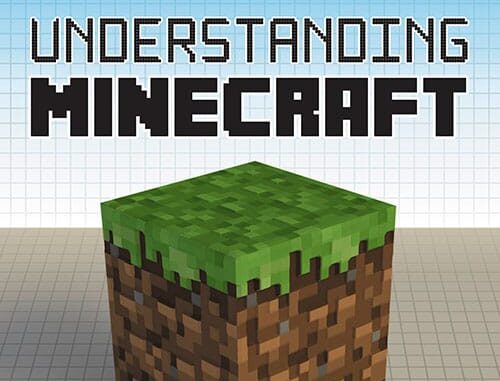
Review Fix chats with Understanding Minecraft author Nate Garrelts, who discusses the creative process behind the book and so much more.
About Understanding Minecraft:
Since its official release in 2011, Minecraft has sold over 48 million copies across all gaming platforms. The premise of Minecraft is simple: destroy, collect, build and interact in a world made entirely of colored cubes. Unlike Lego blocks or other construction toys, Minecraft’s digital play space allows for virtually limitless creation without the cost and limitations of physical building materials. Developer Mojang’s generous policies toward modification and other uses of their intellectual property also engender enthusiasm and creativity from fans who make music, art and animation inspired by the software. The first essays in this collection cover Minecraft’s origins, describing its relationship to other video games and toys and examining the learning models implicit in its design. Later essays describe and theorize the various ways players interact with the software, which simultaneously presents them with structural constraints and limitless possibilities. Instructors considering this book for use in a course may request an examination copy here.
NOT OFFICIAL MINECRAFT PRODUCT. NOT APPROVED BY OR ASSOCIATED WITH MOJANG.
About Nate Garrelts:
Nate Garrelts is a professor of English at Ferris State University in Big Rapids, Michigan.
Review Fix: Why Does Minecraft Matter?
Minecraft matters because it is a mainstay of global popular culture by nearly every definition of the term. It is impressive that such a simple (and old) game still sells tens of thousands of copies each day, with millions of people logging on. The fact that a Minecraft movie starring Jason Momoa and Jack Black was just released is further testament to this level of popularity.
This popularity—in the sense that many people enjoy playing and watching Minecraft—is rooted in something deeper though. Academic John Fiske emphasized the important role that consumers play when interacting with commercial products. One famous example is Levi’s jeans and the ways people personalize them, such as tearing or bedazzling the pockets. The culture industry provides us with all sorts of material, but what we do with it is what really matters most.
When we think about what players have created with Minecraft, and how they’ve used it in ways nobody could have predicted, we begin to see why Minecraft is meaningful. The game is a platform for creation—for art exhibits, for recreating the real world to better understand it, and for teaching everything from programming to cellular biology. There are lots of games that are popular in terms of sales, but very few offer the same kind of opportunities for agency as Minecraft.
Review Fix: What’s the Main Reason You Decided to Do This Book?
Nate Garrelts: I first saw Minecraft sometime around 2012. Students at a community college I was visiting were joking about how their teacher let them host a server at the university, and they showed me the game. To be honest, I wasn’t impressed at first and didn’t understand the appeal. When I returned to my university and asked my students about the game, only one of them knew what I was talking about. He said he had a bunch of licenses for the game that he had acquired cheaply at launch and gave me the account information. I played the game for a little while, made a server to experiment with, and then turned it over to my young son—who discovered mods, an early SkyBlock server, and Yogscast. What I saw him do with the game was special and deserving of serious academic inquiry.
I had previously edited a collection for McFarland in 2006 titled The Meaning and Culture of Grand Theft Auto. My belief at that time—and one I still hold—is that it’s not enough to study a game or any piece of media from a single perspective. To really understand something, we need to analyze it from multiple theoretical angles. At that time, media coverage often seized on controversial elements of any Grand Theft Auto game to condemn the entire franchise. This bothered me because such criticism ignored player agency—what players actually did with the content and why. I immediately saw the value in applying the same approach to Minecraft.
Review Fix: What Was the Research Process Like for This One?
Garrelts: Edited collections generally begin with a proposal to a publisher. I pitched the idea to Layla Milholen at McFarland, with whom I had worked on other books, and she liked the concept. I then circulated a call for papers online and solicited essays from academics who were interested in the game. I also reached out to some scholars I had worked with previously to see if they wanted to contribute.
I received more submissions than I had space for in the collection. At that point, I had to consider the kind of journey I wanted to guide readers through as they explored different facets of the game. The book begins with historical information about Minecraft before moving on to how people use the game and how it fits into a larger media context.
At the same time—and I think this is important—I wanted to select writing that would be accessible to students and scholars from different disciplines, as well as to adults with an interest in game studies.
Review Fix: What Did You Learn That You Weren’t Expecting?
Garrelts: I’ve always been interested in thinking about digital games as art and how they relate to other forms of artistic expression. At the end of the collection, there are a couple of essays that explore how Minecraft intersects with the worlds of art, architecture, sculpture, galleries, and more. I love how these essays challenge us to rethink the potential of digital games.
One example that particularly stood out to me was how Minecraft items were being printed using 3D printers. While 3D printers are now ubiquitous, they really entered the mainstream around the same time Minecraft did. Of course, fans and companies have long reproduced items from games, but this was the first time I encountered people using industrial production techniques to bring digitally envisioned art into the physical world. That might not seem revolutionary today, but at the time it felt like a cool glimpse into the future.
There’s also an essay that contextualizes Minecraft within the history of construction play, education, and toys like LEGO—something I didn’t expect but thoroughly enjoyed. Interestingly, that essay also begins with a link to art and architecture.
Review Fix: Who Will Enjoy This One the Most?
Garrelts: Academics at all levels—from undergraduates to professors—who are interested in media studies and have also played Minecraft will likely enjoy the wide range of theoretical approaches in the collection. It takes passion-fueled effort to get the most out of each essay and to draw connections between them. The intertextual dialogue between the essays is also intentionally nuanced.
Review Fix: Why Should People Pick This One Up?
Garrelts: As an author, of course I want everyone to read the book, but that’s not a responsible answer. This book is really intended for advanced adult readers who enjoy thinking deeply about digital games. High school students may also enjoy the collection, with a bit of patience and a willingness to engage with unfamiliar academic concepts. After all, this is an interdisciplinary collection.
Review Fix: Why Is This One Special to You?
Garrelts: Writing about Minecraft was a fun and meaningful way to connect with my son. He was about nine years old when I started writing the book, and I often consulted with him or shared ideas from the essays. Being an English professor might not be as cool as being a fighter pilot or brain surgeon, but writing about Minecraft during the game’s golden age definitely felt pretty awesome.
Review Fix: What’s Next?
Garrelts: For the first two decades of my career, I wrote almost exclusively about digital games and other media. As my responsibilities at home and work increased, I played games less and have now formally transitioned out of the field. These days, I mostly enjoy the nostalgia of retro gaming and watching others play newer titles. Occasionally, I may be called out of gaming retirement to hop on a keyboard and mouse so someone doesn’t go AFK during a bathroom break.
Academically, I’m now most interested in folk narratives from the United States and how they intersect with regional and national identity. It’s not as flashy as game studies, but it’s important work.
Review Fix: Where Can People Find Out More?
Garrelts: Understanding Minecraft and my other books are all available on Amazon in both print and Kindle formats. They can also be purchased directly from the publisher, McFarland.
Review Fix: Anything Else You’d Like to Add?
Garrelts: We live in a media-rich culture, but we don’t spend enough time reflecting on how media is constructed and how it affects us both individually and collectively. I hope that someday people will place more value on critically thinking about the things we consume, from double cheeseburgers to TikTok reels. My books were written to help people do this with digital games without any agenda beyond encouraging reflection. What people choose to do with that awareness is entirely up to them.


Leave a Reply